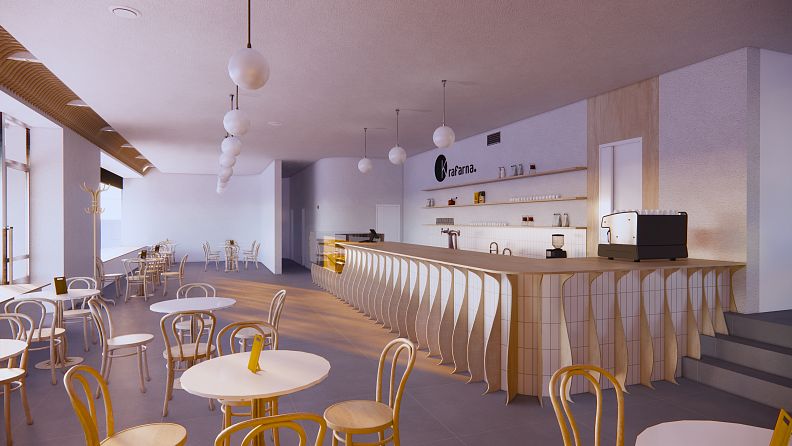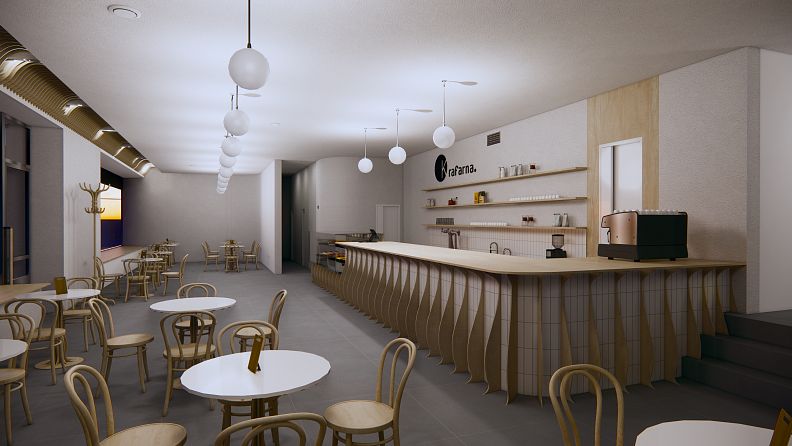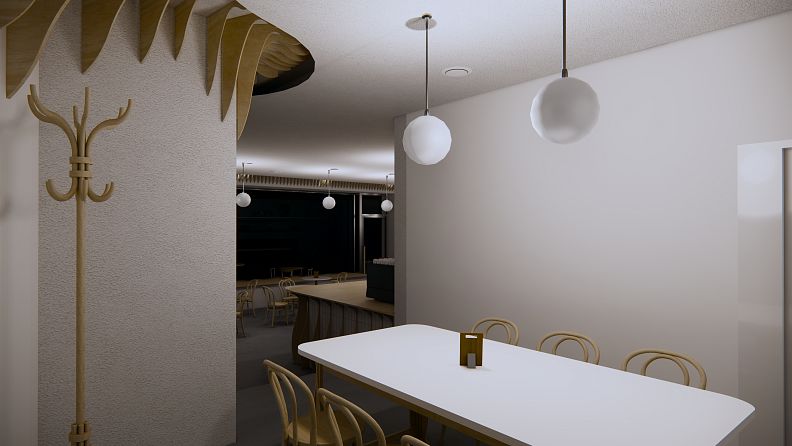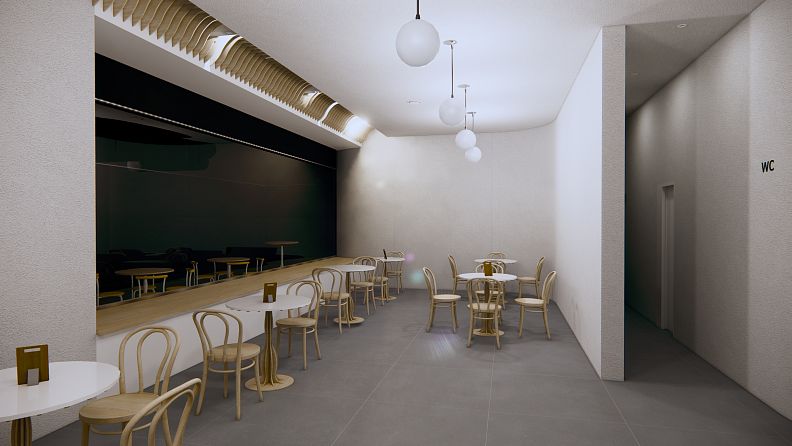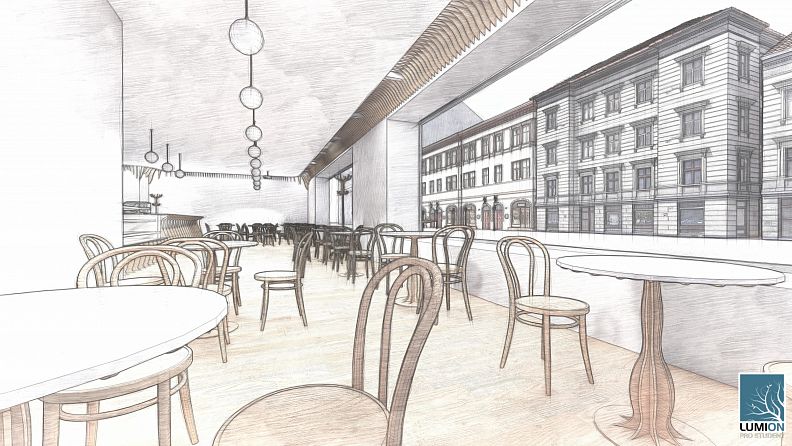(Project) Coffee shop - Krafárna

Project idea
The client's idea is to build a café and a community center for local residents who, together with the owner of the café, want to build a place where they could solve local projects or the problems of the city district.
The client does not have a distinct taste, but he would like to continue the functionalist look of the house and at the same time enliven it with modern elements that would bring the café closer to the current taste. However, he does not oppose any other possible solution that would interest him.
Project description
I tried to satisfy the client's wishes, to adapt the interior
functionalist style of the building. So I decided to use
characteristic elements and materials.
The interior uses large uninterrupted areas with the use of basic geometric shapes. For example, rounded corners, bar counter lined
typical tiles or chrome accessories. I supplemented the functionalist concept of the interior with organic shapes that are supposed to revive austerity
interior and merge with it at the same time.
I used wooden slats, which serve as decoration,
as well as a shade for part of the lighting. For further connection with the interior, I also used the slats for the bar counter and for table constructions. These tables are complemented by classic bentwood chairs designed at the time
when this house was built,
The cafe also serves as a community center where they want
meet local people. It is possible to present various projects here, or to solve local problems here. For this reason, the cafe is equipped
audiovisual equipment and light furniture that can be easily moved.
I divided the cafe, including the background. The space allows the use of two entrances. The first is on the main street, where most people walk and is considered the main entrance for customers. From both sides
The main entrance has two large windows. I left
it is bare to watch from the outside in the cafe. Second entrance
is located around the corner, from a side street. It is planned for
supply, or for separate entrance to the lounge. Due to the current limitations, the door is adapted to set up a dispensing window. If the customer enters through the main entrance, he will find himself in the café area, where he has an overview of the entire space. The tables are arranged so that it is possible to see the counter and communicate with the staff. For a closed company, a smaller room can be used, which is connected to the café and is accessible via three stairs or directly from the street.
Technical information
Everything except the chairs in the café is designed for this interior.
